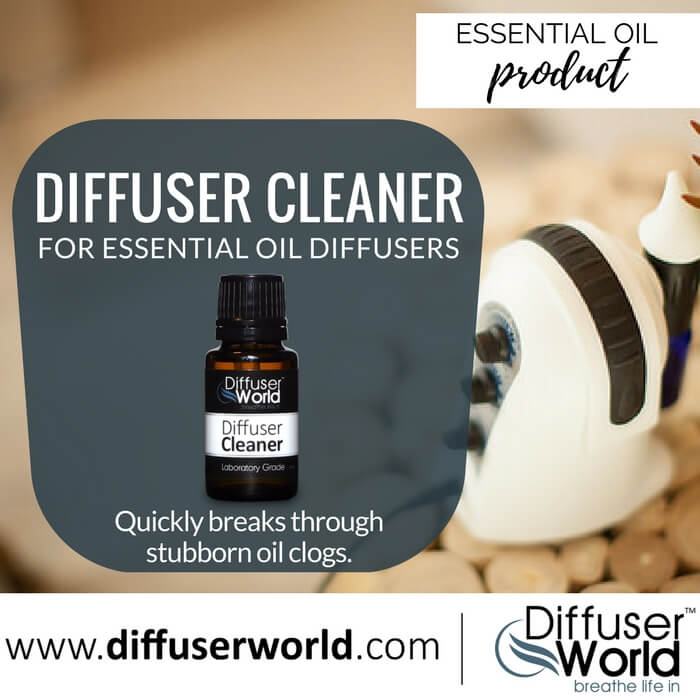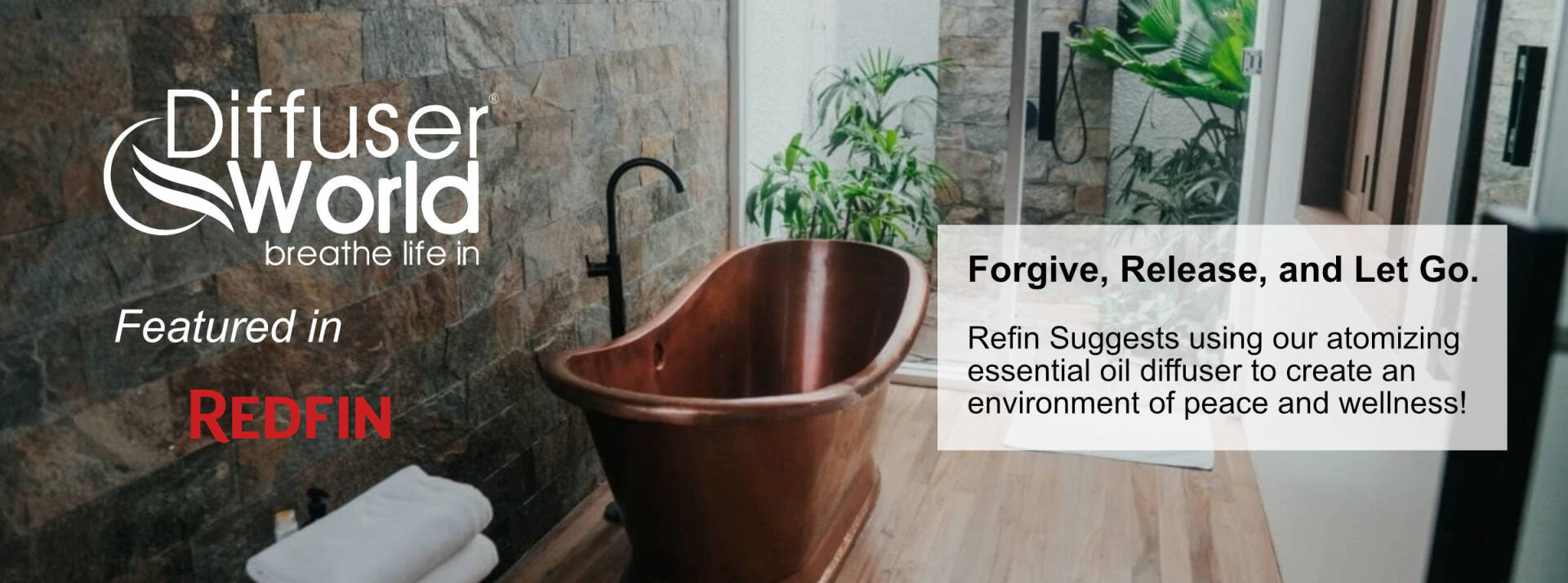How Well Do You Know Your Diffusers?

A diffuser is any device which allows a liquid to evaporate thereby putting a scent into the surrounding environment. If all you want to do is provide a pleasant scent to your environment, any diffuser will work fine. But if you want to use essential oils for their maximum natural qualities and powerful benefit, only an atomizing diffuser will do the job 100% effectively.
The process of diffusion is typically accomplished in FIVE ways.
Five Diffusion Methods (Simplified)
1. Atomization/Nebulization – Breaks down oil molecules by force and pushes a micro-fine vapor into the air.
2. Ultrasonic Vaporization– Ultrasonic frequencies produce vibrations in water creating a water mist in the air.
3. Heat – Increased temperature forces evaporation, releasing aroma into the air.
4. Fan – Forced air is passes over a wick or absorbent pad for evaporation, releasing aroma into the air.
5. Evaporative – Exposes oils to the air to naturally evaporate.
If you want to use essential oils for their maximum healing qualities and pure therapeutic benefit, only an atomizing diffuser will do the job 100% effectively.
Do not make the mistake of thinking all diffusion methods are the same.
Five Types of Essential Oil Diffusers
Finally, it’s time to discuss the different types of essential oil diffusers.
In general, a diffuser is ANY device which allows a liquid to evaporate thereby putting a scent into the surrounding environment. So placing a drop of essential oil onto a tissue and inhaling the aroma turns a tissue into an evaporative diffuser!
Of course, not all diffusers are alike. In fact, there are five different types of diffusers. Understanding all five types of diffusers should help clear up the confusion. Let’s break each of them down.
1) Atomizing/Nebulizing Diffusers:
Atomizing is a new and innovative technology that uses a cold air jet pump to force essential oil molecules through an atomizer and into very tiny particles while preserving the natural healing properties of the essential oils. These micro-particles permeate the air and remain suspended for hours, fully intact, with all of their NATURAL defenses against airborne viruses, bacteria, mold, pests, and odors, and are absorbed gently into the body through the respiratory system.
The aroma created can prompt the nervous system to transmit signals to the limbic system in the brain – the same part of the brain that houses emotion and memory. The brain may respond by initiating various physiological functions, such as a release of hormones, relief from pain, or a positive boost in mood. Other common uses are for respiratory therapy, mood enhancement, relaxation, well-being, air purification, and more.
Atomizers have the largest room coverage of any diffuser type, and the micro-fine mist stays suspended for extended periods of time (1-3 hours). Also unique is the micro-fine mist ultimately evaporates completely, rather than settling on surfaces; and most atomizing diffusers do not need to be cleaned as long as you use them regularly.
If you’re worried about an atomizing diffuser using too much essential oil, most units give the user full control over the oil consumption through built-in intermittent timers and a pressure-control on the pump. After understanding how long the atomized vapor stays suspended, and the full saturation of oil in the air, etc., consumers realize they only need to run the diffuser on the minimum settings, which actually uses minimum amounts of oil.
Atomizing diffusers are typically a little more expensive than other diffusers, but remember it costs more to create a steady pressurized cold air flow than to create heat, or rotate a fan. They are typically built better, use higher quality materials, and have longer warranty periods. Many (of Diffuser World’s atomizing diffusers) are manufactured in America.
Remember, no method of diffusing is as effective in preserving the natural healing qualities of essential oils as atomizing.
2. Ultrasonic Vaporizing Diffusers
Ultrasonic diffusers use electronic frequencies to create vibrations in water, which creates a fine mist (of water and essential oils) that is released into the air. Vaporizers provide humidification and will produce a nice scent in a small area.
Ultrasonic diffusers not only offer a chemical-free way to scent your space, but they provide the spa like atmosphere that goes hand in hand with the aroma. Often ultrasonic vaporizers are equipped with colorful lighting and a variety of timer options. They are generally very quiet.
There’s something to consider however; because the majority of the mist is a water vapor, the scent has limited healing capacity. Studies have shown that mixing oil and water alters and damages the healing properties of essential oils.
It’s important to clean ultrasonic vaporizers often as oil residue can collect on surfaces around the diffuser as well as will coat the ultrasonic disc at the bottom of the unit.
Beware of inexpensive; poorly made vaporizer/ultrasonic imports as they come with short warranty periods (typical is 90 days). You could end up purchasing several units in a year’s time.
3. Heat Diffusers
Heat diffusers warm the essential oil. The increased temperature causes the essential oil to evaporate and release an aroma into the air.
Some heat diffusers are a relatively inexpensive option for making a space smell nice, but they are not optimal when the therapeutic properties of the essential oil are desired.
Heat has two drawbacks. First, it tends to alter the chemical composition of the essential oil which can destroy its purity and therapeutic value. Second, while heat does produce a nice aroma, it may not be therapeutically useful because the size and availability of breathable molecules are mostly filtered out by the nose hairs and nasal cavity.
Examples: lamp rings, candle diffusers, electric heat diffusers, steam diffusion
4. Fan Diffusers
By utilizing a small fan to create airflow, evaporation is achieved when air passes over a wick or absorbent pad which holds the essential oil.
Ventilation offers an economical and simple way to provide evaporation. Since there is no heat involved, the chemical composition of the essential oil remains intact. Fan diffusers are generally quiet.
The size and availability of breathable molecules compromise therapeutic benefits. Ventilation will only cover a small area.
5. Evaporation Diffuser
An evaporative diffuser allows essential oils to be exposed to air so that the oils naturally evaporate. Placing a drop of essential oil onto a tissue and inhaling the aroma is a simple example of evaporative diffusion.
Evaporative diffusers are good for personal use in a small area and on the go; but may not be ideal for large or outdoor areas.
Examples: clay beads, pendants, reed diffuser, cotton ball, tissue
Concluding Your Essential Oil Diffuser Education
With increased education about the health benefits of essential oil diffusers, more people like you agree that purchasing an essential oil diffuser will provide emotional enjoyment from aromatherapy that we are all seeking…along with health benefits.
With an understanding that “smelling” an essential oil does not necessarily mean it is “healing”, full therapeutic benefits of essential oils can be better experienced if a therapeutic-grade diffuser (atomizing) is used.
So have you decided which essential oil diffuser is best for you?
Editor’s Note/Disclaimer: The information in this article is intended for your educational use only; does not necessarily reflect the opinions of Diffuser World, Inc.; and is not a substitute for professional medical advice, diagnosis, or treatment. Always seek the advice of a physician or other qualified health provider with any questions you may have regarding a medical condition and before undertaking any diet, supplement, fitness, or other health program.
Editor’s Note/Disclaimer: The information in this article is not a substitute for professional medical advice, diagnosis, or treatment. Always seek the advice of a physician or other qualified health provider with any questions you may have regarding a medical condition and before undertaking any diet, supplement, fitness, or other health programs. Diffuser World and the ownership of Diffuser World will make no specific medical claim or provide any medical advice. Articles contributed to this platform may be provided by third parties and do not necessarily represent the opinions or beliefs of any Diffuser World representative or the ownership of Diffuser World. Please seek out a medical professional or veterinary professional regarding any questions you may have about the use of any products sold by Diffuser World.





